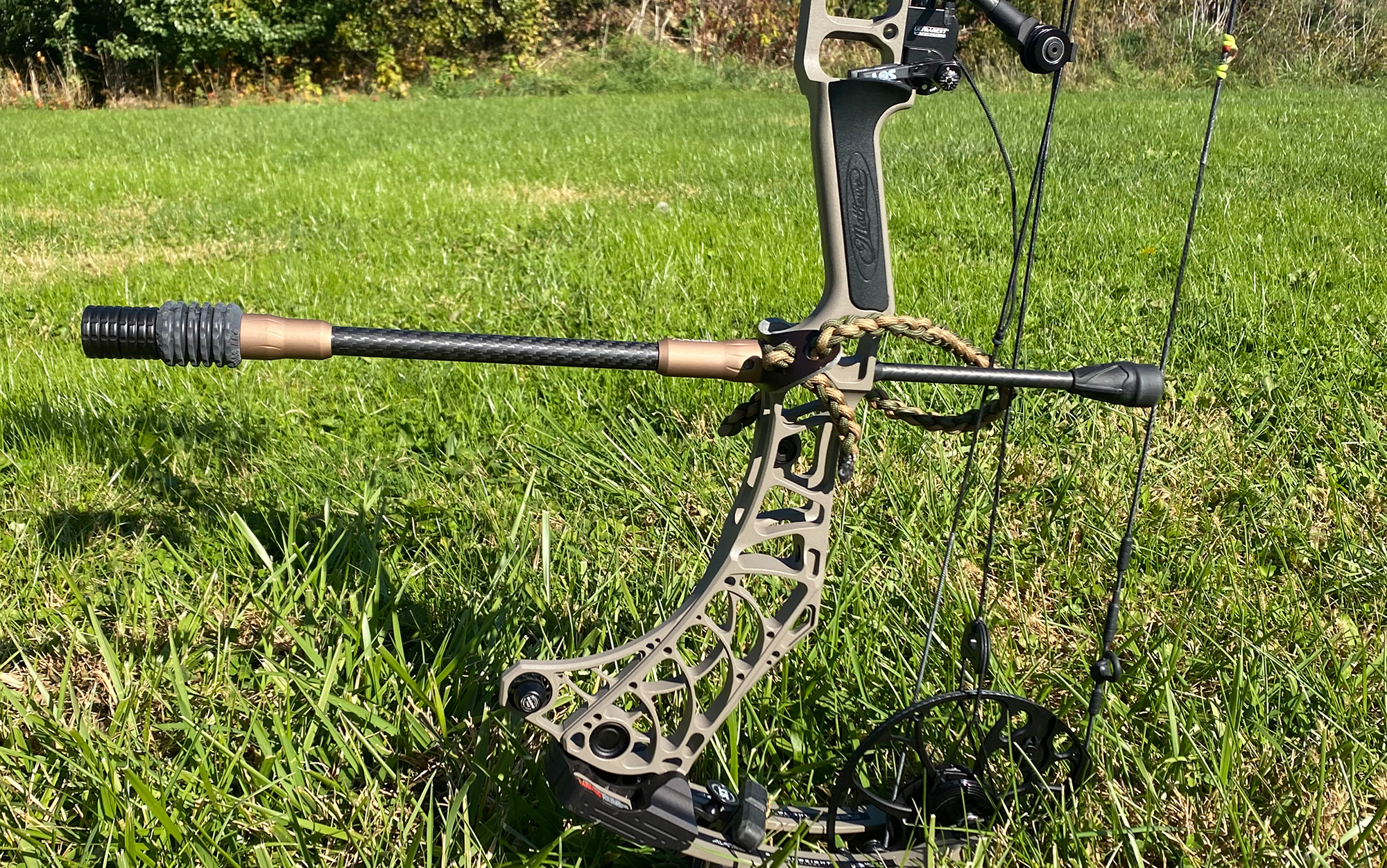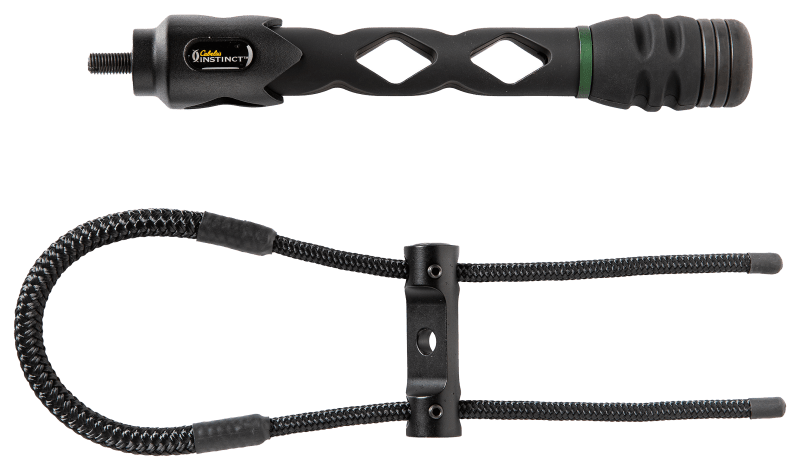Master the Art of Archery: Recognizing the Relevance of a Stabilizer in Your Setup
Whether one is an experienced archer or just beginning their journey, the value of a stabilizer in their configuration can not be overemphasized. By understanding the advantages of utilizing a stabilizer, thinking about the ideal factors when choosing one, and correctly setting up and changing it, archers can boost their skills to brand-new elevations.
The Duty of a Stabilizer in Archery
A stabilizer plays an essential duty in archery by enhancing balance and reducing resonances throughout the shot. A stabilizer assists to neutralize these vibrations by soaking up and dissipating the energy (archery stabilizer).
One of the major advantages of a stabilizer is its capability to enhance balance. When an archer holds a bow, it can be challenging to preserve a consistent purpose. The weight of the stabilizer aids to distribute the weight evenly, lowering the strain on the archer's arm and boosting stability. This permits the archer to concentrate on their goal and implement a more precise shot.
In enhancement to equilibrium, a stabilizer likewise assists to lower torque. The weight and style of a stabilizer counteract this rotation, ensuring a more precise and constant shot.
Advantages of Utilizing a Stabilizer
The use of a stabilizer in archery offers various benefits that enhance an archer's performance and overall shooting experience. First of all, a stabilizer assists to minimize the vibrations produced upon launch of the arrowhead. These vibrations can trigger the bow to torque or spin, resulting in incorrect shots. By taking in and moistening these resonances, the stabilizer enhances the stability of the bow, permitting even more constant and specific shots.
Second of all, a stabilizer helps to stabilize the bow by adding weight to the front end. This weight distribution neutralizes the all-natural tendency of the bow to tip onward upon launch, minimizing the quantity of motion and boosting the archer's capability to maintain purpose on target.

Finally, a stabilizer can likewise function as a shock absorber, decreasing the shock and recoil experienced upon launch. This not just boosts the comfort of capturing however additionally lessens the danger of injury or pressure on the archer's body.
How a Stabilizer Boosts Accuracy
Enhancing the precision of an archer's shots, a stabilizer plays a crucial role in enhancing general performance. archery stabilizer. By including stability to the bow, a stabilizer assists lessen the unwanted motion and vibration that can occur during a shot. This decrease in activity enables the archer to keep a stable purpose, resulting in even more constant and precise shots

In addition, a stabilizer helps to dampen vibrations that happen upon launch. These resonances can create the bow to drink, influencing the arrowhead's trajectory and precision. By soaking up and dissipating these resonances, a stabilizer helps to maintain the bow's stability and ensure a smooth and precise shot.
In addition, a stabilizer can additionally aid in balancing the weight circulation of the bow (archery stabilizer). By including weight to the front of the bow, a stabilizer assists to stabilize the weight click resources of devices, such as quivers or views, which might be connected to the bow. This well balanced weight circulation aids the archer keep a controlled and constant shooting position, causing boosted accuracy
Aspects to Think About When Picking a Stabilizer
When choosing a stabilizer for your bow, it is important to consider numerous variables that will certainly contribute to its general performance and suitability for your specific capturing design. The very first aspect to consider is the length of the stabilizer. Stabilizers are available in numerous sizes, ranging from brief to long. Longer stabilizers generally provide extra stability and balance, but they can also be much heavier and harder to maneuver. Much shorter stabilizers, on the various other hand, use far better ability to move yet may give up some stability.
One more variable to consider is the weight of the stabilizer. The weight of the stabilizer can influence the equilibrium of your bow. A heavier stabilizer can assist to decrease resonances and enhance stability, causing a steadier shot. A lighter stabilizer may be preferred by shooters that focus on maneuverability and speed.
Furthermore, it is essential to think about the layout and construction of the stabilizer. Some stabilizers have adjustable features, such as flexible length or flexible weights, More about the author which enable you to personalize the stabilizer to your particular requirements. The materials used in the building of the stabilizer can likewise influence its effectiveness. Carbon fiber stabilizers are light-weight and long lasting, while aluminum stabilizers use an equilibrium in between weight and rigidness.
Different stabilizers may work much better for specific shooting styles, such as target capturing or searching. It is a good idea to consult with experienced archers or professionals to establish which stabilizer will ideal suit your specific needs.
Tips for Effectively Adjusting a stabilizer and installing
Longer stabilizers offer more stability however can be much less manoeuvrable, while much shorter stabilizers offer boosted ability to move but may give up stability. When you have actually picked the suitable length, connect the stabilizer to the bow using the offered placing hardware. Make certain that the stabilizer is firmly secured and aligned with the bow's riser.
After installing the stabilizer, it is necessary to make adjustments to accomplish the wanted equilibrium and shot consistency. Start by readjusting the weight distribution along the stabilizer. This can be done by including or eliminating weights from the stabilizer's weight system. Trying out various weight arrangements to locate the equilibrium that works best for you. In addition, consider changing the angle of the stabilizer to fine-tune the shot. A minor ahead or backward tilt can impact the bow's equilibrium and how it reacts during the shot.

Final Thought
To conclude, a stabilizer plays a crucial duty in archery by boosting accuracy and reducing bow torque. By including weight to the bow, it helps to maintain the shot and stabilize. When selecting a stabilizer, variables such as product, size, and weight ought to be thought about to fulfill specific demands. Proper installment and change of the stabilizer are additionally necessary for optimal performance. Grasping making use of a stabilizer can considerably enhance the archer's skill and accuracy.
Furthermore, a stabilizer can likewise assist in stabilizing the weight circulation of the bow. By adding weight to the front of the bow, a stabilizer helps to balance the weight of accessories, such as views or quivers, which might be connected to the bow. Some stabilizers have flexible functions, such as adjustable size or flexible weights, which allow you to personalize the stabilizer to your specific needs. Carbon fiber stabilizers are light-weight and durable, while light weight aluminum stabilizers supply an equilibrium between weight and rigidity.
Longer stabilizers give even more stability however can be much less manoeuvrable, while much shorter stabilizers offer enhanced maneuverability however might give up stability.